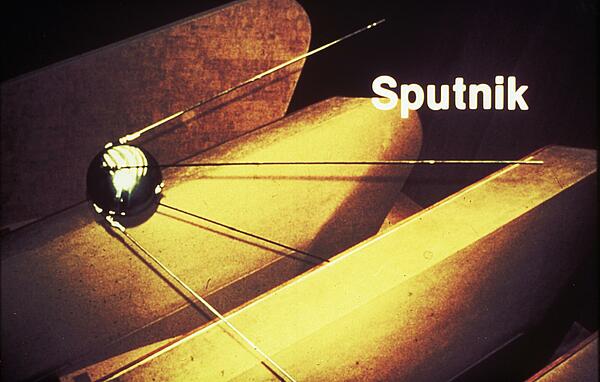Cold War chronology
No sooner had World War Two ended than another very different war began. Fuelled by fear of the spread of Communism, the Cold War stretched on for more than 40 years and while it predominantly involved a standoff between the US and the USSR, there were many countries involved in the Cold War.
Below is a breakdown of the chronology of the Cold War, with the key dates and events:
| 1945: | The Atomic Bomb was dropped on the Japanese cities of Hiroshima and Nagasaki. At this point, the US was leading the global arms race. |
|---|---|
| 1947: | The Marshall Plan was drafted. President Truman signed the Plan in April 1948. However, Stalin, acting on behalf of most of Eastern Europe took it upon himself to refuse the aid. |
| 1948: | The Berlin Blockade started in April. It ended in May 1949. |
| 1949: | NATO was established; the USSR detonated her first Atomic Bomb; China became communist. |
| 1950: | The Korean War started in June. |
| 1952: | On 1 November, the US conducted its first successful test of a hydrogen bomb at Enewetak in the Pacific Ocean. |
| 1953: | The Korean War came to an end in July. Meanwhile, the USSR detonated its first hydrogen bomb. Stalin died. |
| 1955: | The Warsaw Pact was signed. ‘Peaceful coexistence’ was called for. |
| 1956: | In October and November, Hungary revolted against USSR in the Hungarian Uprising. It was quashed by the USSR. Unrest in Hungary coincided with the start of the Suez Crisis. |
| 1957: | The USSR successfully launched Sputnik-1: the first artificial Earth satellite. |
| 1959: | Cuba became a communist state. |
| 1961: | Military aid was sent to Vietnam by US for the first time. The Berlin Wall was constructed. |
| 1962: | Cuban Missile Crisis. |
| 1963: | In this year, America hugely increased its aid to Vietnam. |
| 1965: | USA became openly involved in Vietnam. |
| 1967: | The Six-Day War occurred in June in the Middle East. |
| 1968: | The USSR invaded Czechoslovakia. |
| 1973: | Yom Kippur War was fought in October. A coalition of Arab states fought against Israel. |
| 1979: | The USSR invaded Afghanistan. |
| 1986: | The Reykjavik Summit took place from 11-12 October 1986. This was a meeting between Mikhail Gorbachev (the USSR leader) and Ronald Reagan (US President). occured between USSR (Gorbachev) and USA (Reagan). |
| 1987: | In December, the Intermediate-Range Nuclear Forces Treaty (INF) was signed between the USSR and America. |
The full name of the treaty was: The Treaty Between the United States of America and the Union of Soviet Socialist Republics on the Elimination of Their Intermediate-Range and Shorter-Range Missiles.

MLA Citation/Reference
"Cold War chronology". HistoryLearning.com. 2026. Web.
